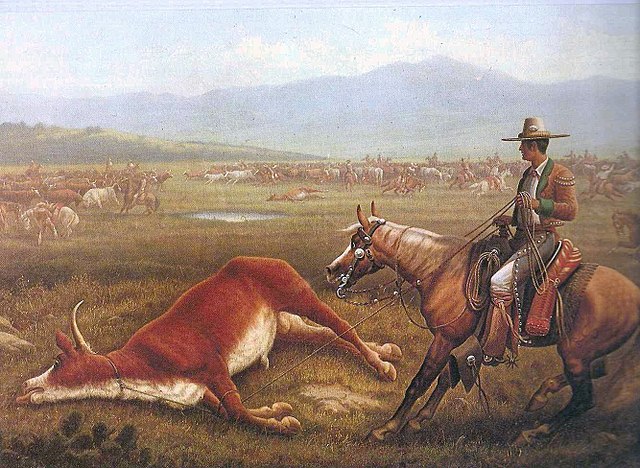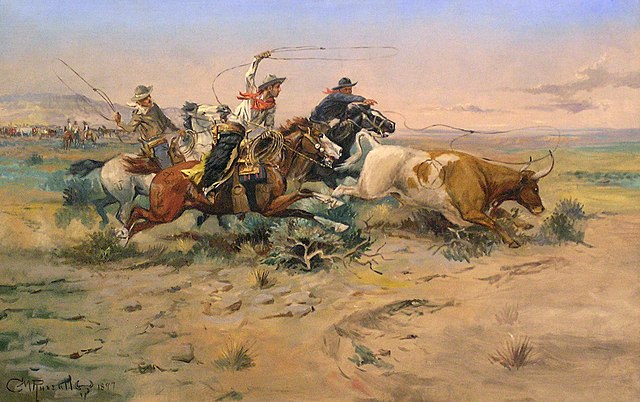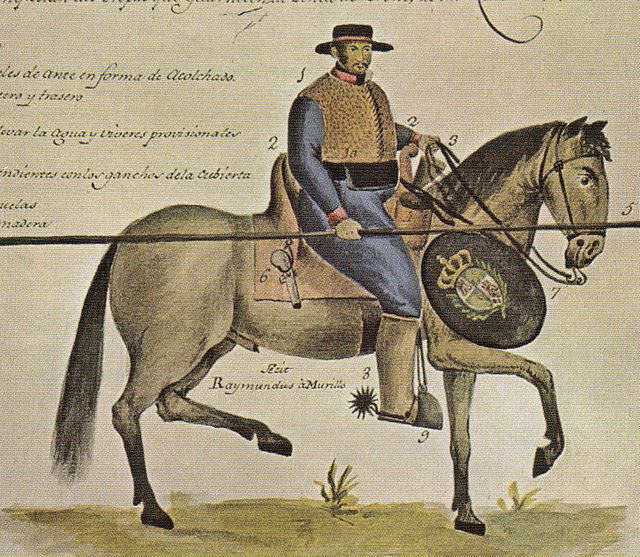The vaquero is a horse-mounted livestock herder of a tradition that has its roots in the Iberian Peninsula and extensively developed in Mexico from a methodology brought to the Americas from Spain. The vaquero became the foundation for the North American cowboy, in Northern Mexico, Southwestern United States, and Western Canada.
Vaquero, c. 1830
Classic vaquero style hackamore equipment. Horsehair mecates top row, rawhide bosals in second row with other equipment
“Charro Mexicano”, 1828. The term “Charro” was originally a derogatory term or nickname for Mexican Rancheros; synonymous with the English terms “hick”, “country bumpkin”, or “yokel”.
"Rancheros", from ”Voyage pittoresque et archéologique dans la partie la plus intéressante du Mexique”, by Carl Nebel 1834
A cowboy is an animal herder who tends cattle on ranches in North America, traditionally on horseback, and often performs a multitude of other ranch-related tasks. Cattle drives ensure the herds health in finding pasture and bring them to market. The historic American cowboy of the late 19th century arose from the vaquero traditions of northern Mexico and became a figure of special significance and legend. A subtype, called a wrangler, specifically tends the horses used to work cattle. In addition to ranch work, some cowboys work for or participate in rodeos. Cowgirls, first defined as such in the late 19th century, had a less-well documented historical role, but in the modern world work at identical tasks and have obtained considerable respect for their achievements. Cattle handlers in many other parts of the world, particularly South America and stockmen and jackaroos in Australia, perform work similar to the cowboy.
Cowboys portrayed in Western art. The Herd Quitter by C. M. Russell
American cowboy, 1887
"King of the Plains" postcard, 1898–1924
18th-century soldado de cuera in colonial Mexico








